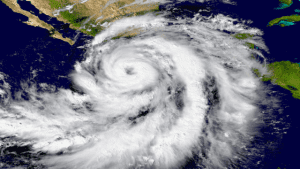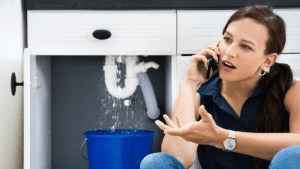Water damage is an all-too-common problem that plagues countless residential and commercial properties alike. Its presence, whether stemming from a seemingly insignificant leak or a catastrophic flood, can wreak havoc on structures, leading to extensive and expensive repairs. Moreover, the aftermath of water intrusion isn’t just limited to structural issues; it can also pose serious health risks due to mold growth and contamination.
For property owners, having a comprehensive understanding of the root causes of water damage is paramount. This knowledge not only aids in identifying potential vulnerabilities in their buildings but also equips them with the tools to take timely action. Some of the most prevalent causes include faulty plumbing systems, compromised roofing, poor drainage, and external factors like heavy rainfall or flash floods.
In this article, we aim to provide a deeper understanding of these causes. By shedding light on these potential risks, we hope to empower property owners with the information they need to take proactive steps.
The Importance of Understanding Water Damage
Water damage is a multifaceted issue that goes beyond the initial destruction. Its implications can linger, affecting various aspects of a property, from its structural integrity to its overall aesthetic appeal. One of the most insidious consequences of water damage is mold growth, which can lead to a host of health problems for the occupants, ranging from allergies to respiratory issues. Additionally, the structural decay that follows unchecked water damage can compromise the safety of the building, posing risks of collapses or further damage.
Furthermore, the financial implications cannot be ignored. A property that has suffered water damage often sees a significant decrease in its market value, making it a less attractive investment for potential buyers or renters. This depreciation can be a significant setback for property owners, especially those who view their property as a long-term investment.
Understanding the intricate web of causes and effects related to water damage is, therefore, of paramount importance. Armed with this knowledge, property owners can be proactive, implementing preventive measures and timely interventions. This not only ensures the safety and well-being of the occupants but also safeguards the property’s value, ensuring that it remains a sound investment for years to come.
Most Common Causes of Water Damage
Plumbing Issues: One of the primary culprits behind water damage in many properties is plumbing-related issues. This can range from seemingly minor problems like leaky pipes or dripping faucets to more severe issues such as burst plumbing lines or malfunctioning fixtures. If these are not detected and addressed in a timely manner, the resulting water damage can be extensive, affecting the property’s foundation, walls, and even its electrical systems.
Natural Disasters:
Mother Nature can be unpredictable, and her wrath often results in significant water-related damages. Events such as hurricanes, torrential rainfall, and sudden flash floods can quickly inundate properties, leaving behind a trail of destruction. These natural events can saturate foundations, flood basements, and even compromise the structural integrity of a building.

Roof Leaks:
The roof serves as the primary shield against external elements. However, with time or due to external damages, roofing materials can deteriorate. This can lead to leaks, allowing water to trickle down, damaging ceilings, walls, insulation, and even leading to mold growth if not detected early.

Appliance Malfunctions:
Our homes are filled with appliances designed to make life easier. However, when devices like washing machines, dishwashers, or water heaters malfunction, they can become sources of significant water damage. A burst hose or a faulty valve can lead to unexpected water overflow, damaging floors, walls, and other nearby items.
Sewer Backups:
Perhaps one of the most unpleasant causes of water damage is sewer backups. When sewer lines get blocked or damaged, it can result in wastewater reversing its course, flowing back into the property. This not only causes water damage but also introduces a range of health hazards due to the contaminants present in wastewater.
Understanding these common causes is the first step towards proactive prevention, ensuring that properties remain safe, functional, and free from the detrimental effects of water damage. Preventing sewage backup can be difficult as it may not be on you when it occurs.
Causes of Commercial Water Damage
In the realm of commercial properties, water damage can have far-reaching implications. Not only does it affect the structural integrity of the building, but it can also disrupt business operations, leading to potential revenue loss and tarnishing the establishment’s reputation. While many causes of water damage in commercial settings mirror those in residential properties, there are some unique challenges that commercial property owners must be aware of:
Sprinkler System Malfunctions:
Modern commercial buildings often come equipped with advanced fire protection systems. A crucial component of these systems is the sprinkler system. Designed to douse fires, these sprinklers can sometimes malfunction, activating without the presence of fire. Such unexpected activations can flood commercial spaces, damaging equipment, inventory, and office infrastructure.
HVAC Issues:
Heating, Ventilation, and Air Conditioning (HVAC) systems play a pivotal role in maintaining the comfort and air quality in commercial spaces. However, if not regularly maintained, these systems can become a source of water damage. Issues like clogged condensate drains or malfunctioning cooling coils can lead to moisture buildup. Over time, this accumulated moisture can seep into walls, ceilings, and floors, leading to mold growth and structural damage.
Unique Commercial Equipment:
Commercial properties often house specialized equipment, machinery, or storage tanks that residential properties don’t. Malfunctions or leaks in these can lead to significant water spillage, affecting large areas of the property.
High Foot Traffic:
Commercial spaces, especially those open to the public like malls or office buildings, experience higher foot traffic. This can lead to quicker wear and tear of plumbing and restroom facilities, increasing the risk of leaks or overflows.
Being mindful of these unique challenges is essential for commercial property owners and managers. Regular inspections, maintenance schedules, and prompt interventions can go a long way in preventing water damage and ensuring the smooth operation of commercial establishments.
Top Causes of Water Damage in the Home
Residential properties, while sharing some common water damage causes with commercial spaces, also face a set of unique challenges. The intimate nature of homes, combined with specific structural and maintenance aspects, can lead to specific water damage risks. Here’s a closer look at some of the predominant causes specific to homes:
Basement Flooding:
The basement, being the lowest point in a home, is naturally susceptible to flooding. Various factors can contribute to this. Poor drainage systems can allow water to pool around the foundation, seeping into the basement. Sump pump failures, especially during heavy rainfall, can lead to water accumulation. Additionally, intense rainstorms can overwhelm the ground’s capacity to absorb water, leading to basement inundations.
Clogged Gutters:
Gutters play a pivotal role in directing rainwater away from the home’s foundation. However, over time, they can become clogged with leaves, twigs, and other debris. When this happens, water can’t flow freely. Instead, it overflows, dripping down the sides of the house. This not only damages the exterior walls but can also lead to water pooling at the foundation, increasing the risk of seepage and foundation damage.
Aging Infrastructure:
Homes, especially older ones, might have aging pipes and plumbing systems. These can corrode, w# Common Causes of Water Damage to Be Aware Ofeaken, and eventually leak. Such leaks, if undetected, can cause prolonged water damage, affecting walls, floors, and even the home’s structural integrity.

Household Appliances:
While appliances like washing machines, dishwashers, and refrigerators make our lives easier, they can also be sources of water damage. Hoses can deteriorate over time, valves can malfunction, and drain pans can overflow, leading to water spillage.
Roof Vulnerabilities:
Over time, roof shingles can wear out, tiles can crack, and seals around vents or chimneys can deteriorate. These vulnerabilities can allow rainwater to seep into the attic and, eventually, into the living spaces below.
Water Damage Restoration Assistance
If your commercial or residential property has experienced water damage, our team can assist. United Water Restoration Group technicians are trained and certified to handle even the most extensive water restoration projects!
Contact our service line at (800) 430-5838 for assistance! Our service line is open 24 hours a day, 7 days a week, 365 days a year!





